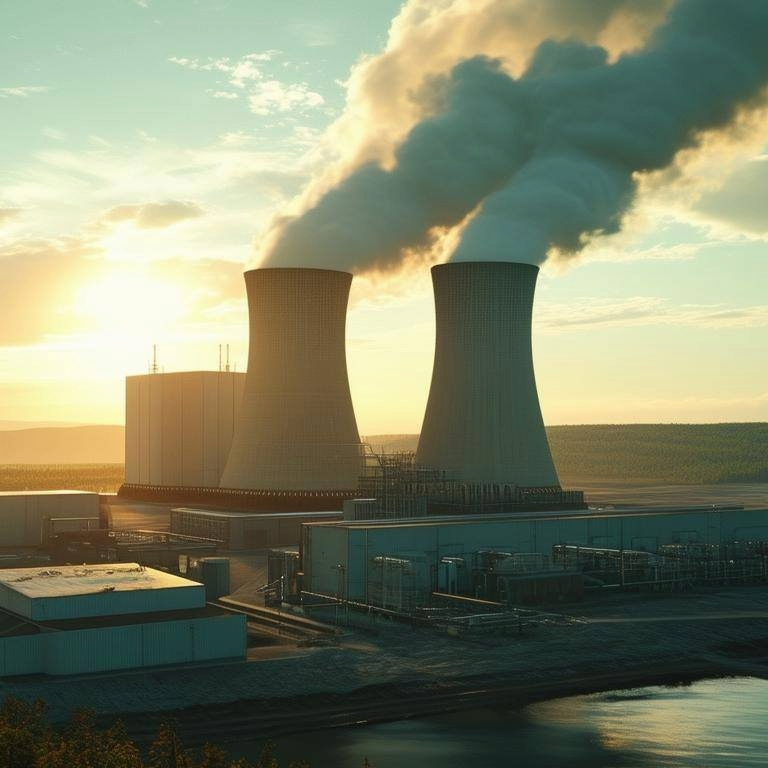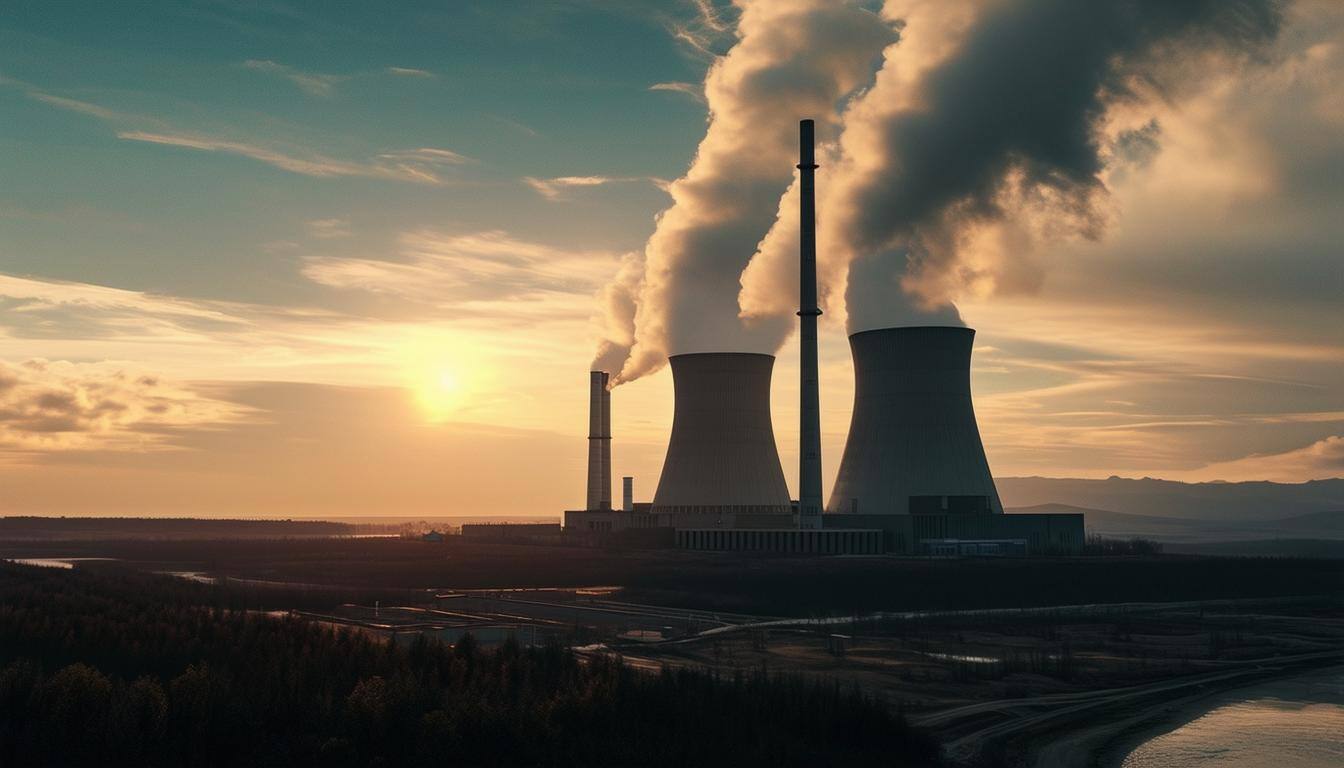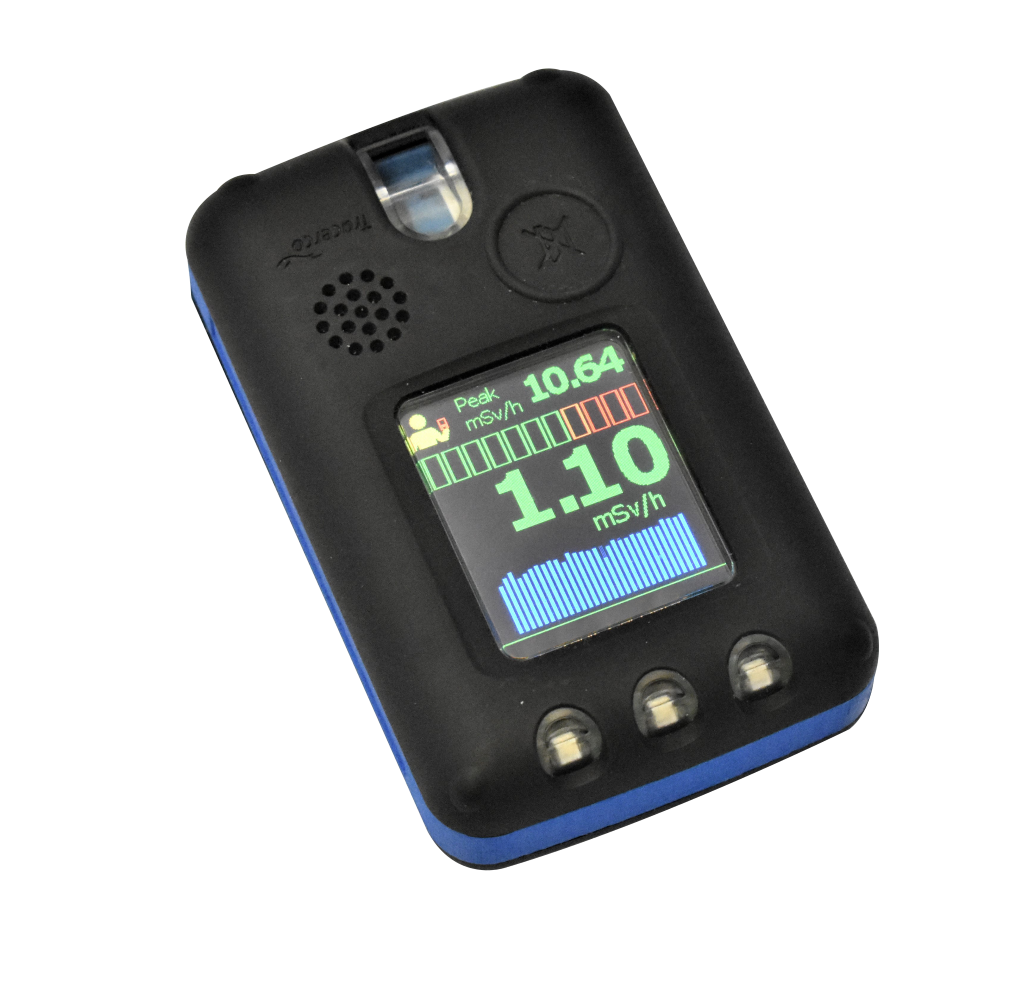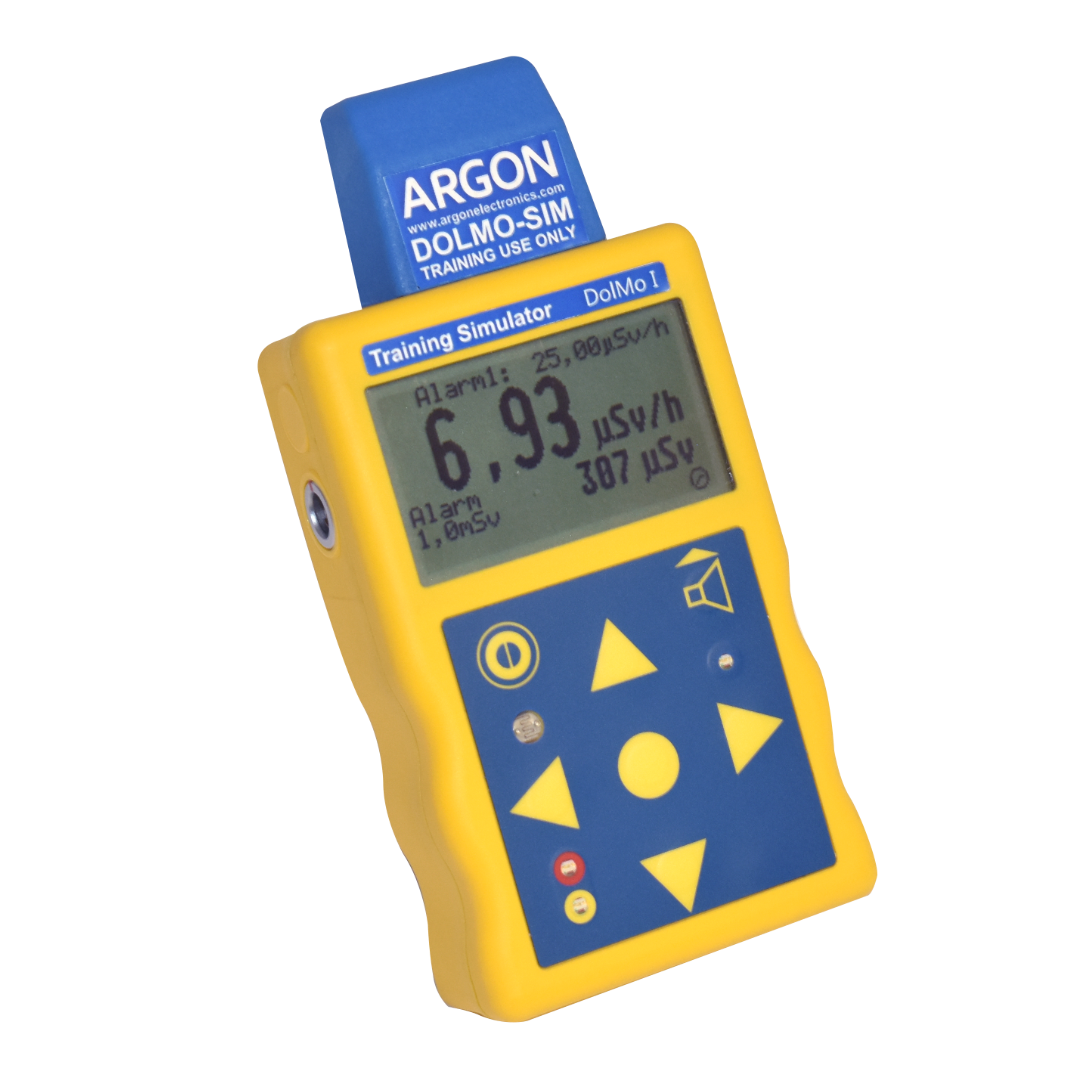Introduction to Nuclear Training
Nuclear Power Industry Emergency vs Radiological Detonation
Section 2.1 of the IAEA Safety Standards Arrangements for Preparedness for a Nuclear or Radiological Emergency divides guidance for emergency preparedness into two classes:
1. Nuclear emergencies, categorised in threat category I, II, or III and can result in devastating loss of life and extensive remediation work.
2. Radiological emergencies, which are categorized in threat category IV and can occur anywhere and risk dangerous exposure to radiation.

Where Do Incidents Occur?
- Nuclear emergencies may occur in locations such as:
- Large irradiation facilities (e.g. industrial irradiators)
- Nuclear reactors (research reactors, nuclear powered ship / submarine reactors and power reactors)
- Storage facilities for large quantities of spent fuel or liquid or gaseous radioactive material
- Fuel cycle facilities (e.g. fuel processing plants)
- Industrial facilities (e.g. facilities for manufacturing radiopharmaceuticals)
- Research or medical facilities with large fixed sources (e.g. teletherapy facilities)
- Radiological emergencies can occur anywhere. Examples include:
- Uncontrolled (abandoned, lost, stolen or found) dangerous sources
- Misuse of industrial and medical dangerous sources (e.g. of those used in radiography)
- Public exposures and contamination from unknown origins
- Re-entry of a satellite containing radioactive material
- Malicious threats and/or acts
- Transportation emergencies
Radiation incidents involving the detonation of a nuclear device can occur as blasts or explosions from nuclear weapons or other improvised nuclear devices. Generally, these types of incidents are handled by highly trained military CBRNe, specialist Government agencies and first response or law enforcement personnel.
These radiological incidents can involve an intended (weaponised) release of radiation. Radiological Dispersal Devices (RDDs), otherwise known as “Dirty Bombs,” are devices that cause the purposeful dissemination of radioactive material without a nuclear detonation. Similarly, Radiological Exposure Devices (REDs) are used as hidden radioactive sources that can cause exposure, but not usually contamination. In these cases, CBRNe, border security, law enforcement, and first response personnel need to be able to detect and mitigate releases while ensuring public safety.
Nuclear power plant incidents usually occur within the aforementioned threat categories I, II, and III and without the intended detonation of a nuclear device. They involve a release of radiation through situations such as transportation accidents, Reactor control system malfunction, major spills, suspected terrorist activity, or trafficking.
Some famous examples of these types of radiological incidents include the Fukushima (2011) and Chernobyl (1986) nuclear disasters. In these cases, operators of nuclear power reactors and power plants need to be highly trained and skilled at ensuring safety, identifying potential hazards, and quickly mitigating any unintended radiological releases.

For both power plant and nuclear detonation incidents, exposure and/or contamination can occur for individuals in the surrounding area. Predicting civilian reaction to these releases, especially nuclear detonations, is one key aspect of emergency preparedness within both nuclear and radiological training. Regardless of the type of detonation or release, the actions taken in the first moments after the event are pivotal to the outcome of responder / military agency and public health and safety.
Because nuclear detonations and radiological releases are different in terms of impact, scale, signature strengths, etc., exercises tend to focus on different objectives.
Training for Weaponised Radiological Detonation Emergencies
Training for radiological emergency preparedness can differ based on whether teams are accounting for pre-detonation or post-detonation scenarios.
Pre-detonation Situations:
In pre-detonation scenarios, nuclear weapons don’t pose a significant radiological hazard. In fact, the radiation signal strength can be relatively hard to detect. This means that search exercises based on detector response are more challenging compared to radiological threats, which are likely easier to detect at longer ranges, even through intervening materials such as shielding.
Post-detonation:
Post-nuclear situations tend to be significantly larger in scale. Additionally, the signatures will vary in composition and magnitude over period as short as 48 hours. Other factors, such as the environment (wind direction, precipitation, etc.), may influence the magnitude and character of the event plume and may even resuspend materials settled on the surface. With this in mind, post-detonation exercises might focus more on performing other operations in dose hazard areas such as search and rescue, aiding evacuation decision-making, or finding debris to support investigations.
Learn more: Addressing New and Emerging Challenges in Nuclear Emergency Response
How Power Plant Training Differs from Radiological Weapons Training
As we have established, nuclear releases involve the detonation of a radiological device, whereas radiological emergencies do not. This is why nuclear power plant operator training might involve different skill sets and decision making processes from those required for an appropriate nuclear detonation response.
For example, a nuclear plant operator or those responsible for nuclear powered vessels (including nuclear powered submarines) may require training on containment practices, fuel characterisation, or accident scenarios. Since nuclear reactor source locations are already known within a power plant setting, there is likely less interest in searching for them, unless there are containment vessel breaches that require localising (such as the Fukushima incident).
Instead, there may be more interest in practising decontamination procedures in these scenarios. And while large-scale accident scenarios might occasionally appear similar in scale to a post-nuclear detonation, the source term would still be different.

Training for Radiation Accidents and the Handling of Illicit Materials
Frameworks for Radiological Emergency Response
Ensuring effective emergency preparation and training depends on the use and implementation of clear frameworks. The US Environmental Protection Agency (EPA) Protection Action Guide (PAG) for Radiological Incidents 2017, for example, provides a helpful framework for public officials planning emergency responses to incidents including both intended and unintended releases of radiation into the environment.
The Radiological/Nuclear Incident Annex to the Response and Recovery Federal Interagency Operations Plans 2016 also provides a useful frame of reference by setting out key operational phases that can guide radiological response and recovery.
Phase 1 of the plan, called Primarily Pre-Incident, comprises three categories:
- 1a - during which where there are normal operations;
- 1b - where there is an increased likelihood or elevated risk of threat and;
- 1c - where there is evidence of a near-certain or credible threat.
The second phase pertains to either when a radiological or nuclear incident first occurs or when notification of that incident is received. There are distinct stages within this phase:
- 2a - which is concerned with activation, situational assessment and movement;
- 2b - which relates to the employment of resources and the stabilisation of the incident and;
- 3b - which begins with the commencement of intermediate operations.
Phase 3 of the federal radiological plan focuses on the tasks that pertain to sustained, long-term recovery operations. This begins with the recovery actions that will be put in place to reduce radiation in the environment to acceptable levels and ends when all recovery actions have been completed.
The phases of the EPA's Protection Action Guide take into account the fact that the priorities that are set - and the decisions that are made early in the response - can often have a cascading effect on future actions and on the nature and efficiency of recovery.
Regulations for Handling Radioactive Materials
As can be imagined, when handling radioactive materials, certain regulations must be followed. In the UK, for example, the Ionizing Radiation Regulations (IRR2017) require that, for certain types of activity and depending upon the risk, anyone working with ionising radiation must inform the Health and Safety Executive (HSE) and obtain permission prior to the start of work.
Additionally, the UK Radioactive Substances Regulation through the Environment Agency establishes and maintains control over the keeping, use, and security of radioactive materials. Specific requirements are set out in Schedule 23 of the Environmental Permitting (England and Wales) Regulations.
In the US, radiation protection responsibilities are assigned to the Environmental Protection Agency (EPA). This body is responsible for writing regulations that apply to individuals, businesses, states, local governments, and other institutions.
Additionally, workers in nuclear power plants and research facilities are expected to constantly monitor their exposure to potentially harmful radiation. They need to train with devices such as the electronic personal dosimeters by Thermo Scientific™. These dosimeters monitor exposure to ionising radiation in real time and emit audible and visual alarms so that personnel can react quickly when an acceptable dose rate level is exceeded.
Nuclear and Radiological Training Equipment
There are some key differences between the response methods, frameworks, and goals involved in nuclear power safety preparedness and radiological weapons training. However, across the spectrum of industrial operatives, military personnel, radiation safety officers, and first responders, two essential pieces of equipment are almost always necessary:
Survey Meters
A survey meter (such as the Mirion RDS-200, or Thermo FH40G) is a portable, battery-powered radiation detector that assesses dose rate. Some of these meters can also accept probes to monitor personnel, equipment, and facilities for radioactive contamination.
A typical device includes an audible indication of the ionising radiation count or dose rate and is often programmed to emit an alarm warning when the radiation dose has been exceeded.
Personal Dosimeters
A Personal Dosimeter (such as the Thermo EPD Mk2 or Mirion UDR13/14/15) is a hand-held device that measures an individual’s cumulative ionising radiation dose and which is programmed to set off alarms at preset thresholds.
A dosimeter monitors the Hp(10) dose (the depth dose of deep organs) and the Hp(0.07) dose (the estimated skin dose). An audible alarm (or chirp rate) increases with the rate of radiation intensity. Personal dosimeters can be worn to obtain a whole body dose and there are also specialist types that can be worn on the fingers or clipped to headgear, to measure the localised body irradiation for specific activities.
Personal dosimeters can be worn to obtain a whole-body dose. Additionally, there are specialist dosimeters that can be worn on the fingers or clipped to headgear to measure the localised body irradiation for specific activities.
Both of these pieces of equipment are relatively straightforward to use, however, due to the nature of ionising radiation, it can be challenging to find opportunities to train with them in a realistic way. There is currently no alternative to radiation that can replicate a reading on an actual, unmodified survey meter or dosimeter.
Many instructors opt for traditional “pretend” training simulations, such as those mentioned in a radiation safety case study by the Mid and West Wales Fire and Rescue Service. These simulations usually involve trainees exercising their real detectors without any actual radiation source to detect. The trainees rely instead on a sequence of "exercise values" provided by their instructor. As can be imagined, this method lacks the authenticity necessary to achieve real experience training.
There has recently been an interest in using virtual reality (VR) technology to support training. While it can replicate instrument response and hazard familiarity, it can’t really replicate the logistical aspects of using actual operating instrumentation. Additionally, VR is early in development and can be extremely expensive. The cost may take resources away from purchasing equipment that supports actual operations.
One training method which has shown to be beneficial is the use of modified devices which replicate every operational feature of a real detector. These can respond to a harmless electronic signal which acts as the simulated ionising radiation source.
Radiological & Nuclear Reactor Simulator Devices for Education & Training
First responders, industrial operatives and military personnel looking to experience radiation hazards first-hand can benefit from simulator devices. They provide real experience training with all of the elements of a real-life incident, with zero risk to the trainees, their equipment, or the environment.
Trainees can learn to rely on the values displayed on their instruments as they experience the real-time effects of time, distance and shielding on their instrumentation.
These devices can help familiarise trainees with the challenges of operating in a radiation-hazard environment. They will gain a first-hand understanding of their reliance on these instruments to tell them what is happening around them, alongside the limitations and applications of the instruments they will use in real situations.
Our Simulators
How PlumeSIM Can Elevate Your Training
The software-based PlumeSIM-SMART system has been specially designed for use in a wide range of scenarios, including radiological and nuclear releases. This system runs on a standard laptop that connects wirelessly to one or more handheld smart devices or mobiles (SMART-SIM) and that simulates real-life detection instruments by means of an installed software application.
The system enables instructors to create, run and optimise each training exercise from a central point. It also provides them with the ability to influence the readings that their students obtain across the training area and throughout each phase of the exercise.
Nuclear power plant safety and radiological training can include different methods and goals, however, implementing real experience training with simulator devices can be helpful across the board for industrial operators, first responders, and military personnel alike.
To learn more about training using the PlumeSIM, download your free copy of our ebook: A Guide To CBRNe and HazMat Wide Area Simulation Training Using PlumeSIM
You’ll learn:
- The four principles of wide-area training
- How to research training systems
- Details about how the PlumeSIM delivers effective real experience training









